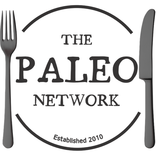In case you didn't already know, dietary protein is essential for human health. Protein is used in the body to build and maintain new tissue such as muscle, hair, nails, skin, bone and blood cells. It is also required to create the enzymes for the body to carry out certain processes, such as the digestion of food; and neurotransmitters, which control your ability to carry out basic tasks (like thought and movement). US dietary guidelines recommend a daily intake of 45g per day for females, and 55g per day for males. In reality, you need much more to maintain optimum health, especially if you’re active. But just how much should you be taking in? And is it possible to consume too much?
Put simply, the amount of protein you need is unique to each individual. For a sedentary person, Many sources recommend around 1g of protein per kilo of bodyweight as a realistic amount needed to maintain lean mass. If you’re more active, you’ll be looking at around 1.5g – and if you’re lifting (and looking to increase lean muscle mass), between 1.8g and 2.0g per kilo of bodyweight is optimal. For example, a 70kg man training three times per week and looking to increase his muscle mass should be targeting between 130g and 140g of protein per day. That’s the equivalent of around 3 eggs, one chicken breast, a handful of almonds and one sirloin steak – so is by no means reaching into the realms of ‘forced’ protein.

Indeed, if protein forms the majority of your caloric intake, then you’re probably consuming too much. Fat should be your main source of energy, with between 15 and 25% coming from protein. Too much protein can create excess toxins in the body, and put a significant strain on the liver and heart. Not ideal.
Chances are, your Paleo diet already features a respectable amount of protein and you’ll probably be achieving your protein ‘target’ without even knowing it. Meat, poultry, fish, eggs, nuts and seeds are all good sources of this macro-nutrient. Amino acids, the building blocks of protein, are found in plants as well – albeit in various quantities. If a food contains all of the ‘essential’ amino acids, then this food is considered a ‘complete’ protein. As plant protein sources are normally lacking in at least one of the essential amino acids, they are usually considered as ‘incomplete’ protein. This is one of the reasons it is hard for vegans to consume adequate protein, and leads to them having to selectively combine foods to achieve a complete amino acid profile.
To conclude, it is probably much better you focus on the quality of the protein you are taking in rather than the quantity. Don’t worry too much about hitting a ‘target amount’ – simply build each meal around a high quality protein source like red meat, poultry, fish or eggs. Consume extra if you’re active, especially on training days. But don’t stress yourself out about it; you’re much more likely to be getting a solid amount of protein each day simply by eating real foods.





















